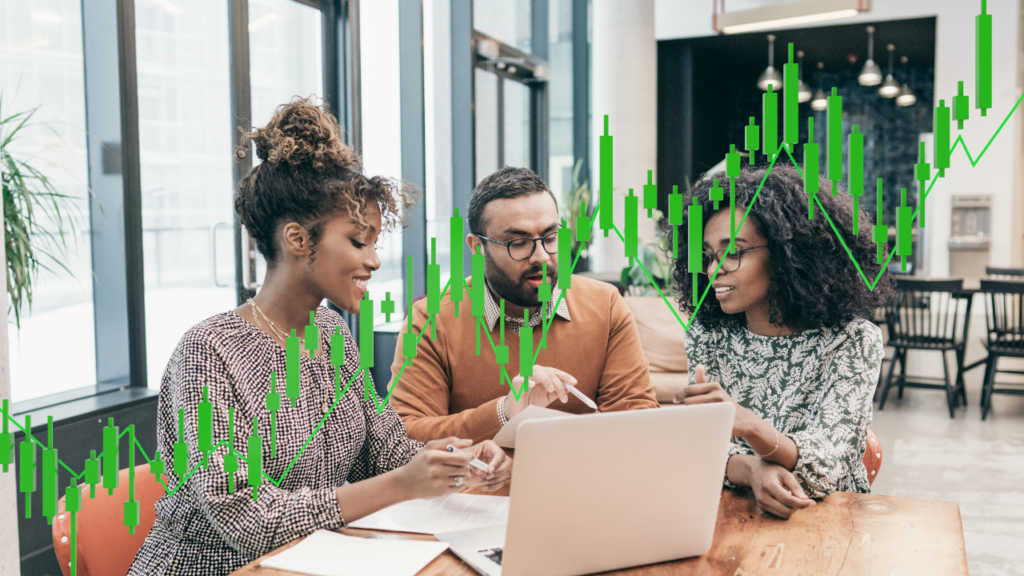Double Your Money was a popular UK TV game show that ran between 1955 and 1968. However, it’s also the name of the game in the world of investing and trading. Savers, traders and investors all want to grow their capital/increase their net worth.
You can use our Rule-72 calculator to see how long it will take to double your money when investing.
So how easy is it to double your money? And how long will that take to happen?
Rest assured it will happen.
It’s a question of when not if thanks to the power of what’s known as compounding. Effectively earning a return on your returns.
If you have £100.00 invested in year 1 at a return of +10.00%.
Then, as you start year 2 you have £110.00 invested, and if you achieve a return of +10.00% in year 2, then, come year 3 you will start with £121.00 and so on.
If you could consistently achieve a return of +10.00% per annum, then it would take just 7.20 years to double your money.
Achieving consistent double-digit returns is not easy
And it follows that neither is doubling your money.
Consider this: If you had a chessboard and started on the first square, with £1.00 and you were able to double that stake, each time you moved to the next square in the progression £2.00, £4.00, £8.00 and so on.
By the time you got to the end of the board, you would be far far richer than even Elon Musk. With a fortune of £9.223 quintillion (that’s more money than there is in the world)- Thanks to a combination of compounding and exponential growth.
The reality is more prosaic
If we look back at the performance of the FTSE 100 from the year 2000 to the end of 2024, we find that the compound annual growth rate for the index is just +3.46% – You would have doubled your money by investing in the FTSE, over this time frame, but it would have taken you 20.81 years to do it.
Risks and Returns
Higher returns are of course associated with higher risks, and there is a hierarchical structure when it comes to investing your money.
Cash Deposits are seen as being the least risky investment but they typically offer the lowest returns. An instant access saver account at Nationwide pays +1.80% variable on the first £9999.0 invested and at that rate, it will take 40.0 years to double your money.
Government and High-Quality Corporate Bonds are in the next tier. It’s unlikely that you will lose your money investing in these assets, though it could happen, However, you are compensated for that risk with a higher rate of return for example medium-term UK Gilt Edged Securities or Gilt have on average yielded 3.12% between January 2000 and January 2025 according to data from the Bank of England.
Using the Good Money Guide Double Your Money calculator we find that it would have taken 23.08 years to double your money if you had those annualised returns.
Equities or Stocks and Shares are next on the risk ladder. Equity holders bear a high degree of risk because, in the event of corporate bankruptcy or failure, unlike bondholders or other creditors, they have no claim against the assets or earnings of the business.
Dividends are a discretionary reward and it’s the market that determines how well a share price performs based on the perceived future earnings and prospects of that company. Once again however investors are “compensated” by the market for this risk through higher returns.
If we had invested in the S&P 500 index back in the year 2000 we would have enjoyed an annualised return of +7.93% and at that rate, we would have doubled our money in just over 9.0 years.
This doesn’t happen in a straight line.
Of course, what these calculations don’t show us, is the range of the market over that time frame.
For example, the S&P 500 fell by -9.10% in 2000, by a further -11.89% in 2001 and by a whopping -22.10% in 2002. Before rallying by +28.68% in 2003. Only to fall by -37.00% in 2008.
Being in the market for an extended duration helps to smooth out equity and equity index returns. However, there is no getting away from stock markets are cyclical and the returns they generate follow suit.
Derivatives are the highest rung on the risk ladder. Derivatives is a broad brush term that covers everything from CFDs and spread bets, to on-exchange futures and options, over commodities, indices and financial instruments. As well as leveraged, inverse, and leveraged inverse ETFs and ETPs.
Derivatives, which are often deemed complex products, are designed and used for hedging and short-term speculative trading.
They are typically traded on margin, allowing users to gear up their exposure, to potentially generate far larger PnLs, than would be available through trading the underlying instruments.
Unlike many other instruments, it is possible to trade long or short of most derivatives with equal ease. However, being short of derivatives such as futures and options, or CFDs creates a very different risk profile for the end user.
Using leveraged derivatives it’s theoretically possible to double your money overnight, but it’s just as conceivable that you could lose it all too.

With over 35 years of finance experience, Darren is a highly respected and knowledgeable industry expert. With an extensive career covering trading, sales, analytics and research, he has a vast knowledge covering every aspect of the financial markets.
During his career, Darren has acted for and advised major hedge funds and investment banks such as GLG, Thames River, Ruby Capital and CQS, Dresdner Kleinwort and HSBC.
In addition to the financial analysis and commentary he provides as an editor at GoodMoneyGuide.com, his work has been featured in publications including Fool.co.uk.
As well as extensive experience of writing financial commentary, he previously worked as a Market Research & Client Relationships Manager at Admiral Markets UK Ltd, before providing expert insights as a market analyst at Pepperstone.
Darren is an expert in areas like currency, CFDs, equities and derivatives and has authored over 260 guides on GoodMoneyGuide.com.
He has an aptitude for explaining trading concepts in a way that newcomers can understand, such as this guide to day trading Forex at Pepperstone.com
Darren has done interviews and analysis for companies like Queso, including an interview on technical trading levels.
A well known authority in the industry, he has provided interviews on Bloomberg (UK), CNBC (UK) Reuters (UK), Tiptv (UK), BNN (Canada) and Asharq Bloomberg Arabia.
To contact Darren, please ask a question in our financial discussion forum.




